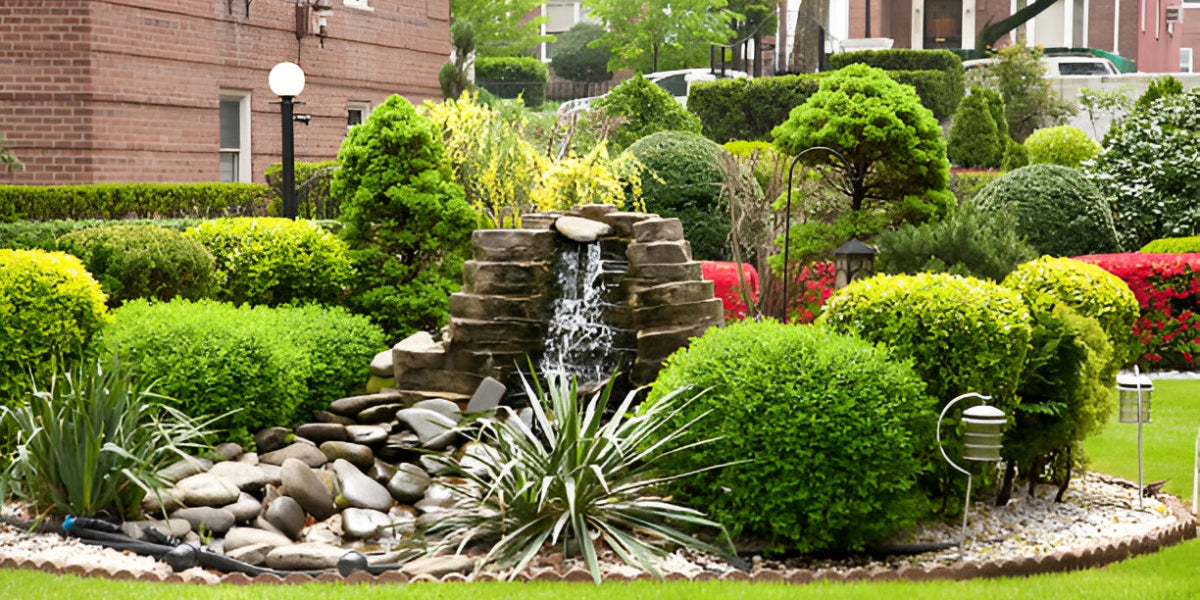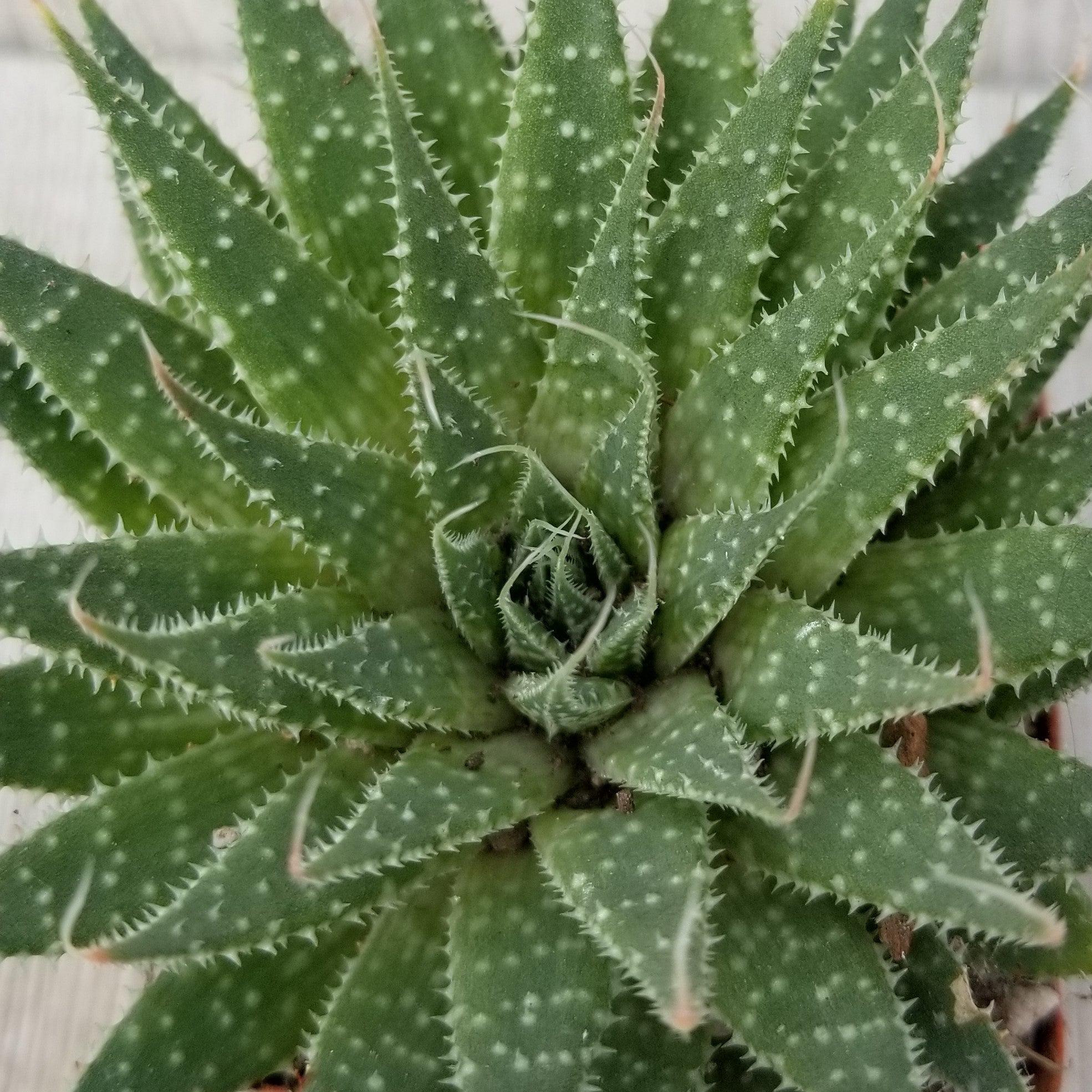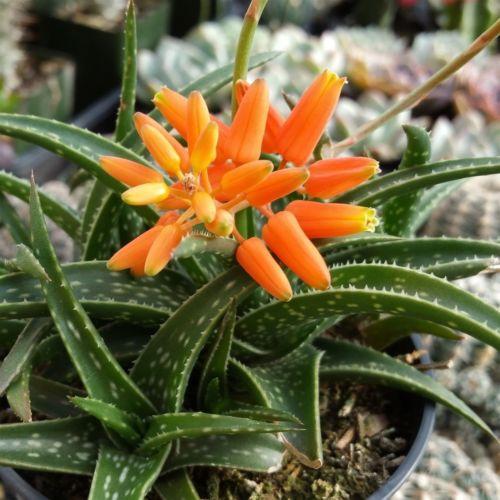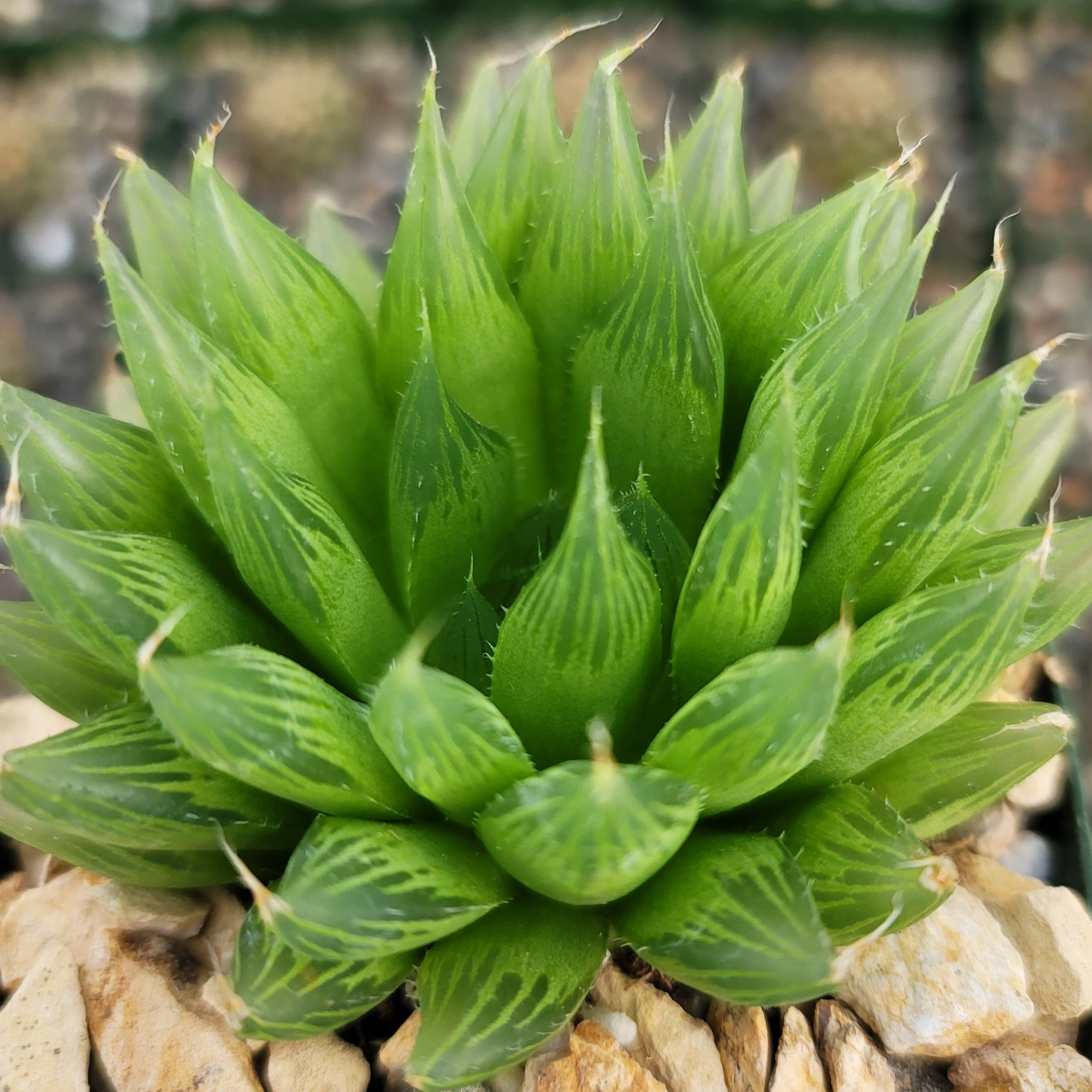Difference Between Agave and Aloe Plants!
Updated: January 28, 2025

Agave and Aloe plants looks similar, which can make it challenging to distinguish between the two drought-tolerant succulents. As they both are adapted to survive in hot and dry climates, agave and aloe are also similar.
Agave Vs. Aloe: What's the Difference?
We frequently buy succulent plants that are mislabeled, and sometimes there is no label at all. One such scenario can occur when we purchase Agave plants or Aloe. These plants look similar, and if you haven't grown them both before, it's easy to become confused. But fear not, there are a few key differences between Agave and Aloe plants that can help you distinguish between the two.
1. Comparing the Sizes of Agave and Aloe Plants
The primary difference between Agave and Aloe plants is their size. Agave succulent plants are usually larger than aloe plants at maturity, like Century plant (Agave americana). At the blooming stage, their size difference is very clear as some agave plants can produce up to 40 ft. tall flower stalks. Some aloe varieties can be quite large, like the Aloe Tree, but generally, agaves are larger than aloes.
2. Difference in Leaves
The leaves of aloe and agave succulents are different.

Aloe plants produce thicker and more fleshy leaves than Agave. Their leaves have a softer and spongy texture. The Aloe leaf can easily breaks off, like Aloe Vera. The spines on aloe leaves are visible and softer to touch; they won’t hurt your skin.

The Agave plant leaves are usually thinner and more fibrous. Agave fibers, especially from Agave sisalana are used to make sisal rugs and ropes. It is tough to break the leaves of the blue agave plant and other varieties. The agave leaf spines are harder and can cut you so either don’t touch them or touch them gently.
3. Flowering Differences Between Agave & Aloe Plants
The Agave and Aloe flowers look similar but their blooming frequency is very different. Both plants produce clusters of flowers on long stalks that grow from the center of the plant. The length of these stalks varies depending on the specific type of Aloe or Agave. While the flowers come in shades of yellow, orange, and red, the frequency and timing of their blooms set these plants apart.
Aloe plants bloom yearly, but most Agave plants bloom once in a lifetime. Aloe are polycarpic, which means they bloom yearly usually during December and May and have bell-shaped or tubular flowers.

On the other hand, the agave plants are monocarpic, which means they bloom only one time in their lifetime, generally between 10 to 30 years of age. Once pollination has happened and the seed is produced, the succulent starts to die.

4. Aloe & Agave Generally Grow During Different Times
When it comes to Agave vs Aloe, their growing periods differ.

Agave succulent plants grow during the warmer period and become dormant during the colder season. If you have Agave attenuata, Agave bracteosa, or any other type of agave plant in your garden, you should stop feeding them during dormant months. The agave water requirements in the winter season are minimal so you should focus on it to prevent root rot.

Aloes are more tolerant of seasonal variations and may exhibit some growth throughout the year if kept in stable conditions. Aloe plants have a more varied growing period depending on the species. Some Aloe species, particularly those from regions with winter rainfall, may grow during the cooler months and go dormant in the heat of summer. Additionally, certain species—like agave—grow in the summer.
If you are wondering how often to water Aloe plants, you should feed them occasionally during the colder months as they grow in the winter season. Watch for an overwatered aloe plant; giving your coral aloe plant too much water can kill it.
5. Difference in Their Origins
Knowing where your plant hails from and what type of climate it loves will assist you to do proper agave and Aloe.
- Aloe succulent plants originate from Africa, particularly the Southern hemisphere and Madagascar island.
- Agave succulent plants originate from the Southern U.S., Central America, and Mexico. Both plants can survive in almost all regions of the world if given proper care.
Both aloe and agave plants are drought-tolerant and similar in shape and look. You can do proper aloe and agave succulent care only when you know about their differences.
Where to Buy Aloe and Agave Plants?
If you want a good selection then the best places is to find a nursery that specializes in succulents, the best option is looking online at a place like Planet Desert.
Here we have the world's largest selection of Cactus & Succulents that can be shipped anywhere in the United States and are guaranteed to arrive happy & healthy.
Final Thoughts
Overall, both Agave and Aloe plants share some similarities, but they are distinct species with unique characteristics. From their size and growth habits to their leaf shape and color, each plant has its own set of features that set it apart. Understanding these differences can help you choose the right plant for your garden or indoor space, and provide the best care for your succulent friends. Whether you're a seasoned succulent enthusiast or just starting out, appreciating the unique qualities of Agave and Aloe plants can enhance your appreciation for these incredible plants.
Frequently Asked Questions
-
What is the best pot for an aloe plant?
A ceramic or terracotta pot with a porous base that is at least 2 inches wider than the aloe plant works best.
-
What are the light requirements of Agave plants?
Whether you are growing Agave stricta, Agave isthmensis, or any other agave variety, make sure you offer it full sunlight. It means a minimum of 6 hours of direct sunlight almost every day will help your agave succulent plant grow ideally.
-
What temperature do Aloe and Agave plant tolerate?
Your agave plants can ideally grow in temperatures ranging from 60-90°F while aloe temperature tolerance is between 55 to 80°F.
-
What are Agave and Aloe vera plant used for?
Aloe vera plant is also called medicinal aloe owing to its healing properties. It is widely used for treating problems related to skin, hair, and even metabolism. Agave plants, on the opposite side, can be toxic so they cannot be consumed like aloe vera gel. However, you can make agave tequila for yourself from this plant. Additionally, agave sisalana is a great variety that is used to design sisal rugs.
-
How does an overwatered aloe or agave plant look?
An aloe plant that is overwatered may become darker and wilt. You will also notice blistered cells in its leaves, stems become softer, and mold appears in the soil. The leaves of an overwatered agave plant will become yellow, mushy, and translucent. You may even notice light spots on the leaves. Hence, it is highly important to take care of aloe and agave water requirements.























